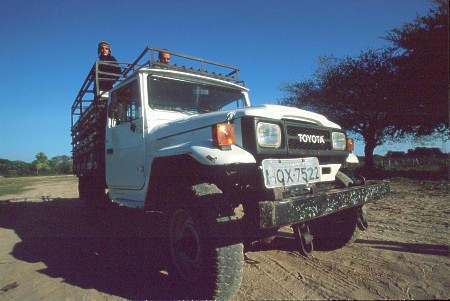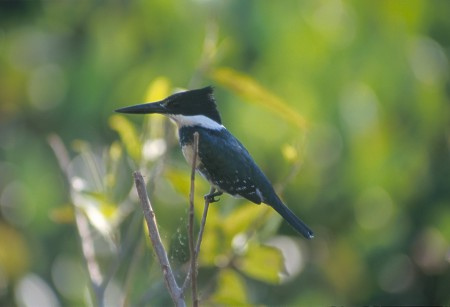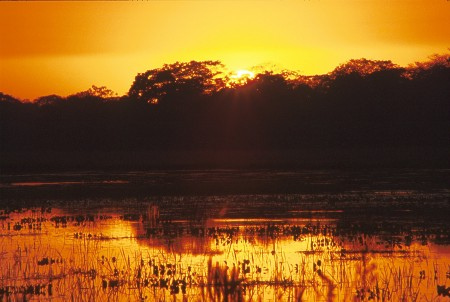Nobres
Intro text to be completed
TBC: Notes
Located in the middle north Mato Grosso, the region offers good conditions for the practice of extreme sports like rappelling, rafting, mountain climbing, mountain biking, caving and cave diving. Straight out of Cuiaba, tourists already delighting in Serra Azul. In this mountain range, between the cities of Rosario and Noble West, were discovered over 200 caves, but only a few have been explored. Full of stalactites, stalagmites, lakes and streams, these caves have the potential to become major tourist attractions. The list is long: Cave of the Blue Lagoon, the Cathedral, the Bauxi district (Rosario West), which has a huge fig tree, Cave of Paca, the Urubamba, the Goat, mushroom, Boqueirão, Rainbow Cave, the Aguadinha, the Gravel, Pau d'Alho. In addition to the caves, the region scroll through tracks in mountains, meet indigenous villages, archaeological sites and enjoy crystal clear waters, waterfalls, caves and places for fishing and diving. Access is difficult, often requires cars with four-wheel drive. Located in a transition area between the Cerrado and the Amazon region.
Gruta do Salobra
MT241, to Marzagão, 53 km
Near the Blue Lagoon and, inside pass Rio Salobra with temperate and crystalline waters that are home to many fish. Beyond this river, there can be observed speleothems a distance of 500 meters. It is only allowed to enter people accompanied by guides.
Balneário Estivado
MT-241, 60 km
Limestone and highly crystalline formation, Ribeirão stowed offers snorkelling option. Also, it has the only restaurant in the area, which are bound to arise capuchin monkeys who seem guess lunchtime. Those who enter the river can still observer many small fish such as minnows and piaus.
Located in the middle north Mato Grosso, the region offers good conditions for the practice of extreme sports like rappelling, rafting, mountain climbing, mountain biking, caving and cave diving. Straight out of Cuiaba, tourists already delighting in Serra Azul. In this mountain range, between the cities of Rosario and Noble West, were discovered over 200 caves, but only a few have been explored. Full of stalactites, stalagmites, lakes and streams, these caves have the potential to become major tourist attractions. The list is long: Cave of the Blue Lagoon, the Cathedral, the Bauxi district (Rosario West), which has a huge fig tree, Cave of Paca, the Urubamba, the Goat, mushroom, Boqueirão, Rainbow Cave, the Aguadinha, the Gravel, Pau d'Alho. In addition to the caves, the region scroll through tracks in mountains, meet indigenous villages, archaeological sites and enjoy crystal clear waters, waterfalls, caves and places for fishing and diving. Access is difficult, often requires cars with four-wheel drive. Located in a transition area between the Cerrado and the Amazon region.
Gruta do Salobra
MT241, to Marzagão, 53 km
Near the Blue Lagoon and, inside pass Rio Salobra with temperate and crystalline waters that are home to many fish. Beyond this river, there can be observed speleothems a distance of 500 meters. It is only allowed to enter people accompanied by guides.
Balneário Estivado
MT-241, 60 km
Limestone and highly crystalline formation, Ribeirão stowed offers snorkelling option. Also, it has the only restaurant in the area, which are bound to arise capuchin monkeys who seem guess lunchtime. Those who enter the river can still observer many small fish such as minnows and piaus.
Historic
The history of the city and the region is closely linked to flags and the discovery of gold. In 1719, the Pathfinder Pascoal Moreira Cabral, accidentally found this metal on the banks of the River Coxipó. So it was soon founded the Village fork and thousands of people went to the territory of Mato Grosso.
In 1751, another pioneer, Ignacio Maciel Tourinho, found gold in Ribeirão Cutia and founded a settlement known as Upstream. In 1861, it became a village called Up of Our Lady of the Rosary and Rio was spun off from Cuiabá. Part of the current territory of Noble belonged to the Town of Our Lady of the Rosary of the River Up, which later was renamed Rosario Oeste. As the allotment of Noble was a natural path for those who went to the north of the state, geralamente behind the diamonds found near the city of Diamantino, quickly became one parade Point drovers and travelers. Several incidents occurred in the region, among them fighting during the 1901 revolution, between separatist forces and other representing the government. Another historic event occurred in 1913, when an expedition of Cândido Rondon Marshal took nothing less than the US president, Theodore Roosevelt. Both spent the night on a farm in the Serra do Tombador.
In 1926, it was the turn of the Prestes Column, which, on the run, knocked down several bridges in the region. The municipality's creation occurred in 1963, but the first was not actually elected two years later.
The history of the city and the region is closely linked to flags and the discovery of gold. In 1719, the Pathfinder Pascoal Moreira Cabral, accidentally found this metal on the banks of the River Coxipó. So it was soon founded the Village fork and thousands of people went to the territory of Mato Grosso.
In 1751, another pioneer, Ignacio Maciel Tourinho, found gold in Ribeirão Cutia and founded a settlement known as Upstream. In 1861, it became a village called Up of Our Lady of the Rosary and Rio was spun off from Cuiabá. Part of the current territory of Noble belonged to the Town of Our Lady of the Rosary of the River Up, which later was renamed Rosario Oeste. As the allotment of Noble was a natural path for those who went to the north of the state, geralamente behind the diamonds found near the city of Diamantino, quickly became one parade Point drovers and travelers. Several incidents occurred in the region, among them fighting during the 1901 revolution, between separatist forces and other representing the government. Another historic event occurred in 1913, when an expedition of Cândido Rondon Marshal took nothing less than the US president, Theodore Roosevelt. Both spent the night on a farm in the Serra do Tombador.
In 1926, it was the turn of the Prestes Column, which, on the run, knocked down several bridges in the region. The municipality's creation occurred in 1963, but the first was not actually elected two years later.
** SORRY - THIS PAGE IS STILL UNDER CONSTRUCTION **
Complexo da Cerquinha
MT-241, 56 km
This complex can be seen several caves. The main one is the Cerquinha, which has formations as stalactites, stalagmites, travertine, caves and columns pearl nests. The presence of many bats makes it a little unhealthy. They are necessaries lighting equipment and helmets. The operation takes on average two hours. Next, guests will also find it Duct Quebo, a tunnel 400 meters, and the Cave of Pedra Grande, which also houses a large lake. These two are indicated only for very experienced researchers and people in this sport.
Reserva Indígenas Santana
BR-163 and MT-240, 140 km
The bakairis Indians are quite friendly and generally get the white man. There one can find a wide variety of crafts and see some ritualistic dances and tribal ceremonies, as the feast of corn and the feast of the young lady.
Rio Arinos
BR-163 and MT-240, 70 km
Are 11 kilometers full of waterfalls and rapids that can be traversed in an average time of five hours. The best time is the rainy season (November to April), when the volume of water is great. But access conditions often have problems in this period. To just admire the scenery, the dry season is best, you can see animals such as capybaras, tapirs, monkeys, otters and toucans.
Complexo da Cerquinha
MT-241, 56 km
This complex can be seen several caves. The main one is the Cerquinha, which has formations as stalactites, stalagmites, travertine, caves and columns pearl nests. The presence of many bats makes it a little unhealthy. They are necessaries lighting equipment and helmets. The operation takes on average two hours. Next, guests will also find it Duct Quebo, a tunnel 400 meters, and the Cave of Pedra Grande, which also houses a large lake. These two are indicated only for very experienced researchers and people in this sport.
Reserva Indígenas Santana
BR-163 and MT-240, 140 km
The bakairis Indians are quite friendly and generally get the white man. There one can find a wide variety of crafts and see some ritualistic dances and tribal ceremonies, as the feast of corn and the feast of the young lady.
Rio Arinos
BR-163 and MT-240, 70 km
Are 11 kilometers full of waterfalls and rapids that can be traversed in an average time of five hours. The best time is the rainy season (November to April), when the volume of water is great. But access conditions often have problems in this period. To just admire the scenery, the dry season is best, you can see animals such as capybaras, tapirs, monkeys, otters and toucans.








Photo Credits: Spectacled Caiman (Shutterstock/Dirk Ercken)
Pantanal Escapes